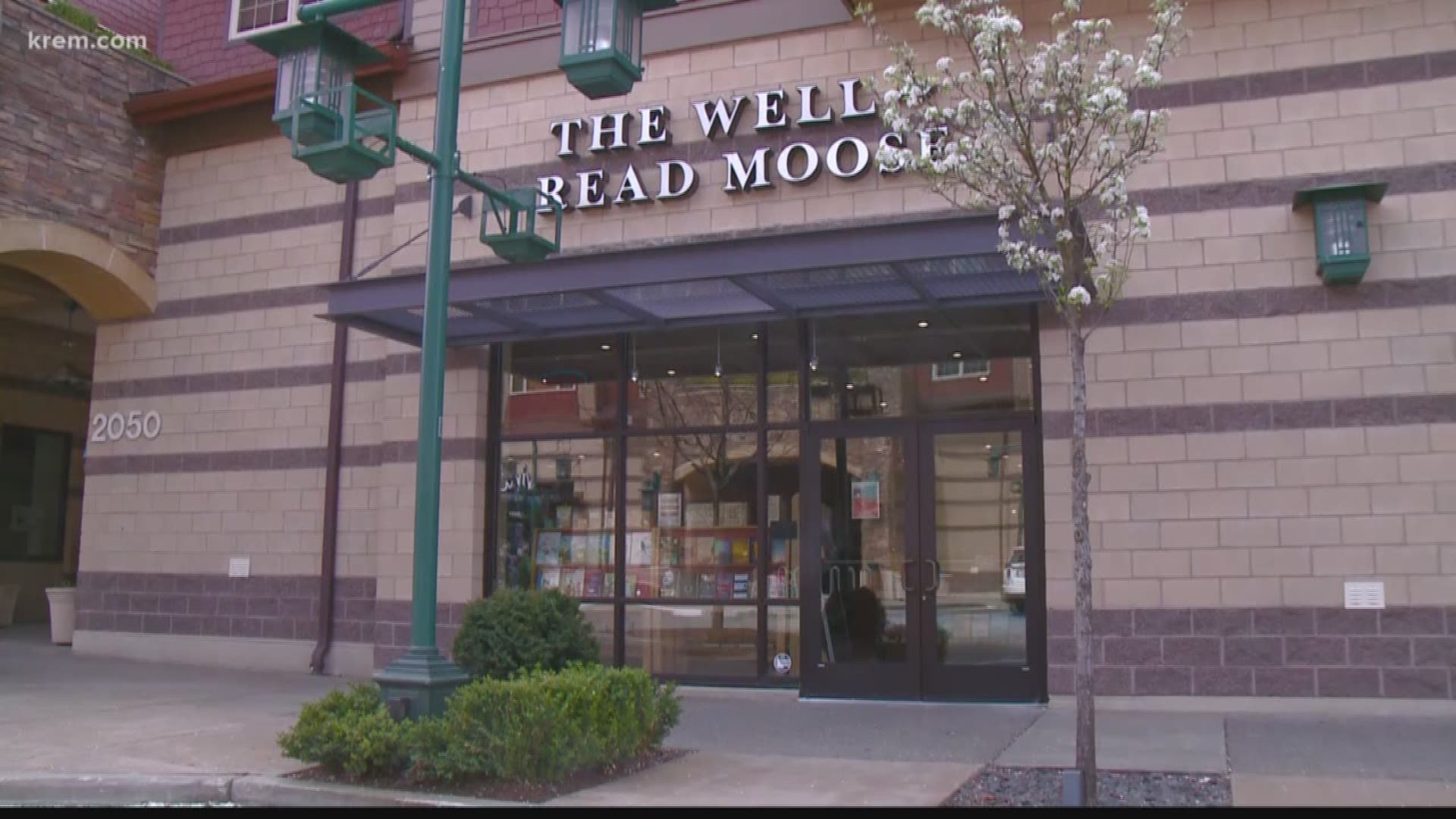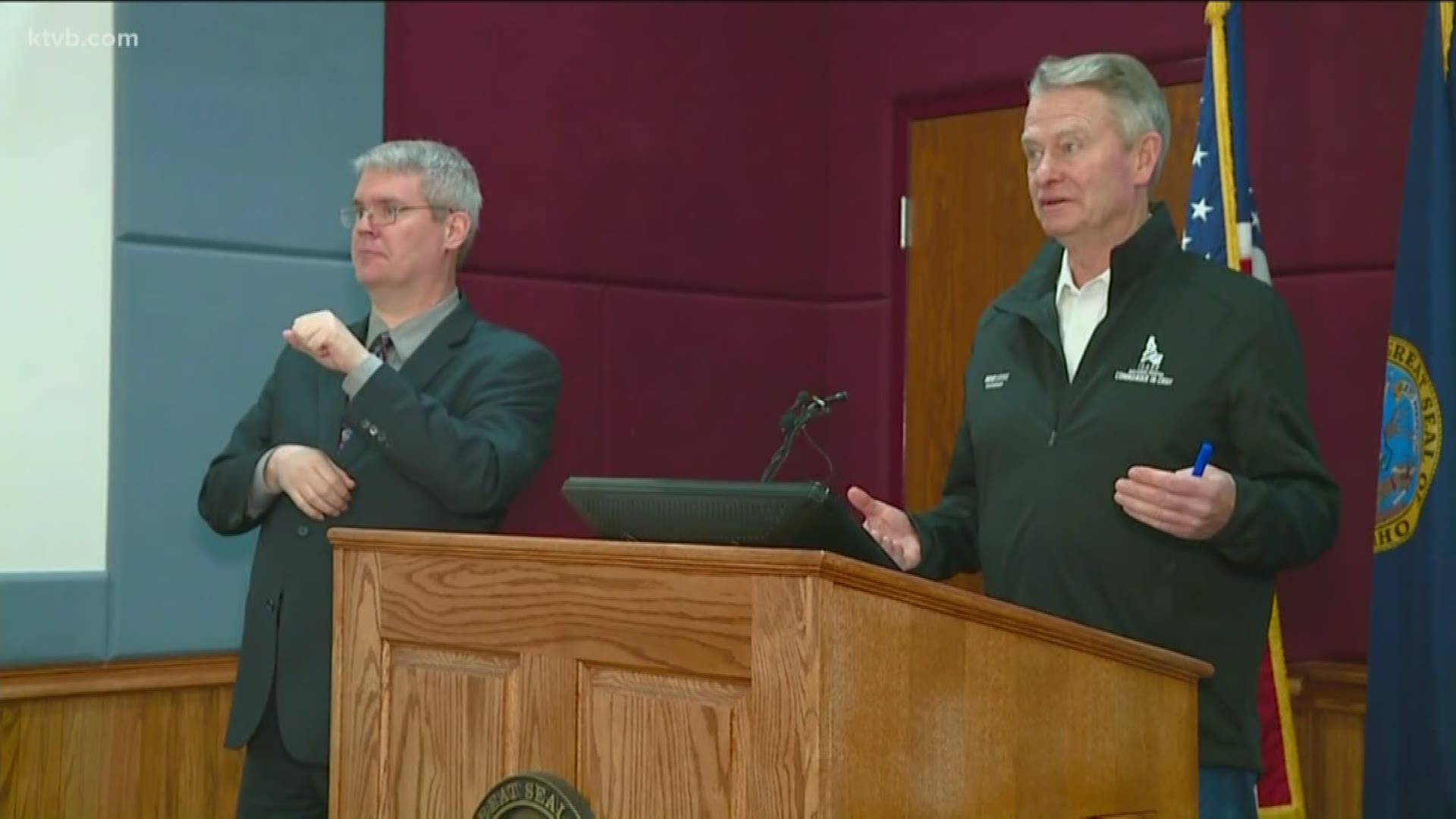The reopening of some Idaho businesses that were deemed "non-essential," and have had to shut down because of the COVID-19 coronavirus outbreak, will begin on Friday, but it won't happen all at once.
With these plans in place, businesses in North Idaho are preparing to open their doors once again to customers they haven't seen in weeks.
"Its going to be a different experience for retailers, [for] everybody," said Melissa DeMotte, owner of The Well-Read Moose, a bookstore in Coeur d'Alene.
Some changes at the store will include employees wearing face masks and shorter shifts for staff, DeMotte said.
The Well-Read Moose has only seen about 25 percent of her normal sales as compared to before the stay-home order, DeMotte said. She said that, while they will be taking all necessary social distancing precautions, she's ready to re-open her doors.
"That's kind of the whole point, is the discovery as you're wandering around. Plus talking with staff, getting recommendations, reading our shelf-talkers," DeMotte said.
But even with the store reopening and customers soon walking between the shelves of the bookstore, DeMotte said people shouldn't think things are going back to normal just yet.
"It's tough. Because when people think, 'Oh, you're open, everything's going to be fine.' I don't see fine for a long time," DeMotte said.
Gov. Little outlines phased re-opening plan
The current statewide stay-at-home order expires on Thursday. Idaho Gov. Brad Little said the state will begin its reopening process on Friday, May 1.
Under Stage One of the reopening plan, set for May 1 through May 15, places of worship can open if they adhere to strict physical distancing, sanitation protocol, and any guidance from the Centers for Disease Control and Prevention (CDC).
Daycare facilities and organized youth activities, including camps, also can reopen during Stage One.
In that stage, Idahoans are still advised to avoid non-essential travel or gatherings of any size. A 14-day self-quarantine for people entering Idaho continues through the month of May.
Gyms and personal care services, such as barber shops and beauty salons, may reopen during Stage Two, set for May 16-29, if they can meet protocols.
Restaurant dining rooms can also open during Stage Two, once their plans have been submitted for approval by local public health districts.
Bars and nightclubs are to remain closed until Stage Four, June 13-26.
That distinction between restaurants and bars raised a question about logic and fairness, using the example of a brew pub that offers alcoholic beverages in its dining room and is classified as a restaurant because it serves food, while the tap room of a craft brewery would be classified as a bar, even if the brewery regularly hosted food trucks.
In Stage Three - projected for May 30 to June 12 - gatherings of ten to 50 people would be allowed, as long as precautionary measures are observed. Vulnerable Idahoans can resume public interactions, but should continue to practice physical distancing, avoiding social situations where that is not possible.
The mandatory 14-day quarantine for people entering Idaho would also be lifted. Likewise, non-essential travel will be allowed to places that do not have ongoing transmission.
The final stage, Stage Four, is estimated to begin June 13 and would see the reopening of bars, theaters, and other venues, as well as gatherings of more than 50 people, as long as precautions are in place. Work-from-home recommendations would also be lifted at that point, and visits to correctional facilities and senior living centers would be allowed to resume.
The dates for each stage of reopening are tentative. Idaho won't advance to the next stage if certain criteria are not met, as measured by the state's syndromic tracking and disease reporting systems. Those criteria are detailed in the Stages of Reopening page on the Idaho Rebounds website. They are also summarized below:
- Downward trend or low numbers of COVID-19-like illness patient visits as tracked by emergency departments within a 14-day period.
- Downward trend or low levels of COVID-19 cases reported within a 14-day period.
- Health care facilities are able to treat all patients without needing to use crisis standards of care; also, availability of ventilators, intensive care unit beds and personal protective equipment.
Reliable measurements of COVID-19 trends depend on testing.
Gov. Little said Tuesday that a task force on testing will advise the Idaho Dept. of Health and Welfare and the Coronavirus Working Group on how they can measure success against the pandemic.
"Have we had the testing capacity we would have liked? No, we haven't," said David Jeppesen, director of the Idaho Dept. of Health and Welfare. "But I think that we are in a much better place today, and that's part of the reason we started this testing task force, to make sure we leverage that capacity in the best way possible."
A little more than 20,000 people in Idaho had been tested for COVID-19 as of Monday, according to the Idaho Division of Public Health's coronavirus website.
More than 80 percent of those tests were conducted by commercial laboratories.
Jeppesen said each COVID-19 test takes about four hours, and it now takes two to five days for results to be returned.
"We're getting much closer to two days on those tests," he said.


